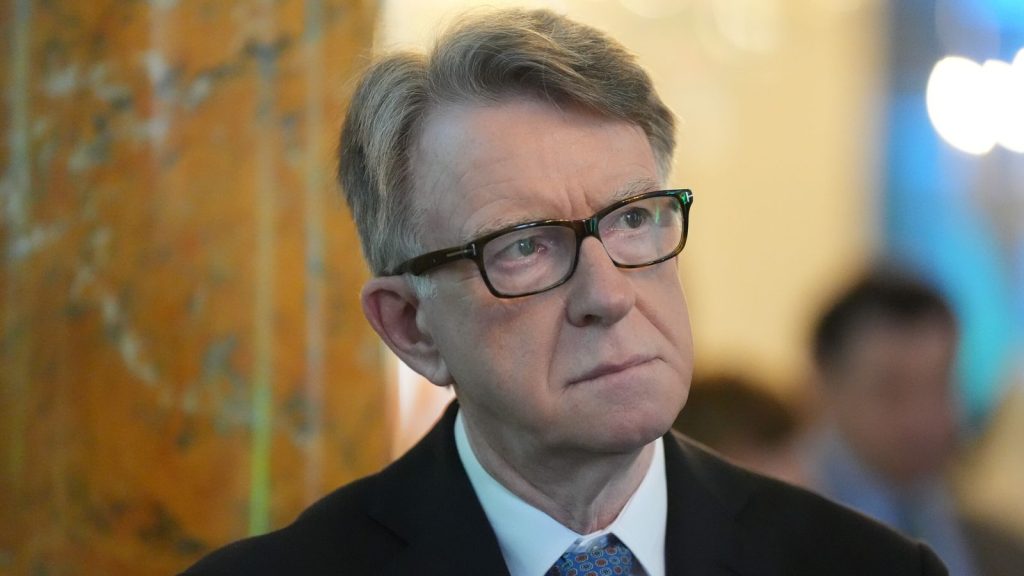There are renewed calls for Lord Peter Mandelson to be removed from the House of Lords ahead of his expected return to the UK.
The former US ambassador was sacked from the Washington-based job last week over new revelations about his friendship with convicted sex offender Jeffrey Epstein.
There are many Labour figures, such as Baroness Harriet Harman, who now want him to be stripped of the party whip and banned from parliament’s upper chamber.
Here’s how it could happen.
Whip removed
The whip is a term to describe party discipline. Whips ensure their colleagues vote according to the leader’s agenda and MPs are often suspended from their parliamentary party (stripped of the whip) if they don’t fall in line.
This has happened to several Labour MPs over the past year for disagreeing with the government on issues like welfare cuts and the two-child benefit cap – John McDonnell, and Rachel Maskell are among former Labour MPs now sitting as independents.
Lots of MPs have questioned why Lord Mandelson hasn’t suffered a similar fate.
However, he has been on a leave of absence from the Lords while working in the United States, so he has not been voting and does not technically have the Labour whip, although he is still classed as a Labour peer.
Peers on leave must give three months’ notice to House authorities to apply to return, so the whip issue will only be decided if and when he does that.
If Lord Mandelson does apply to return to the upper chamber, the decision on his status rests with Lord Roy Kennedy, who is the government’s chief whip.
And Lord Foulkes, a veteran Labour peer, told Sky News on Friday that he did not think Lord Mandelson would retain the whip.
“I would doubt if he would remain a member of the Labour group in the House of Lords,” he said.
“If he returns, that’s a matter for Roy Kennedy, who is a very experienced member of the Labour Party and who is our chief whip in the House of Lords. He will know how to deal with it and I’m sure he’ll make the right decision.”
Barred from the Lords
However, if Lord Mandelson is stripped of the whip that does not mean he is no longer a member of the House of Lords, just that he will sit as a crossbench peer.
It is very rare for a peer to be banned from the House – there was no mechanism for doing this until 2015 and even now the circumstances are limited.
One way is if Lord Mandelson is found to have broken the Lords’ code of conduct. This would allow the Lords Conduct Committee to recommend expulsion or temporary suspension, a punishment that fellow peers would have to vote on.
No one has ever been expelled in this way. Former Labour peer Nazir Ahmed was the first to be recommended for expulsion like this in 2020, after allegations he exploited a vulnerable woman, but he resigned before the vote took place. He was later jailed for the attempted rape of a young girl, though he retains his title.
In another case, Lord Maginnis was suspended for 18 months in December 2020 for breaking the code of conduct by bullying staff.
However, Lord Mandelson is not currently under investigation. For this to happen, someone would have to make a complaint against him and the standards commissioner would assess whether there is a case to investigate.
It’s not clear if a complaint has been made against him.
Baroness Harman told a special episode of the Electoral Dysfunction x Trump100 podcast that if Lord Mandelson applies to return, he should undergo “new vetting”.
“If somebody is not suitable for upholding the reputation and standing of the House of Lords, it doesn’t make sense to let them back in. So I think that process should be gone through,” she said.
Mandelson could resign
Lord Mandelson could resign from the House of Lords, in which case he would no longer vote or have access to parliament. This was the path Lord John Sewell went down in 2015, after the Sun on Sunday published video of him apparently taking drugs with prostitutes.
To resign, members must give written notice to the clerk of the parliaments – the most senior impartial official in the Lords. Resignations cannot be rescinded.
What about his title?
Giving up membership of the House of Lords is separate from giving up a peerage, which is almost impossible.
Lord Mandelson was made a life peer in 2008 by the then prime minister Gordon Brown, whose cabinet he served in as well as Tony Blair’s.
While peers are nominated by politicians, the Crown formally approves them through a legal document. However it does not then have the power to cancel them – this can only be removed by an act of parliament.
The most recent act that did this was the Titles Deprivation Act 1917, which was used to remove British peerages from “enemies” of the UK during the First World War. No new law in this area has passed since, meaning there is no modern practice for rescinding a peerage.




